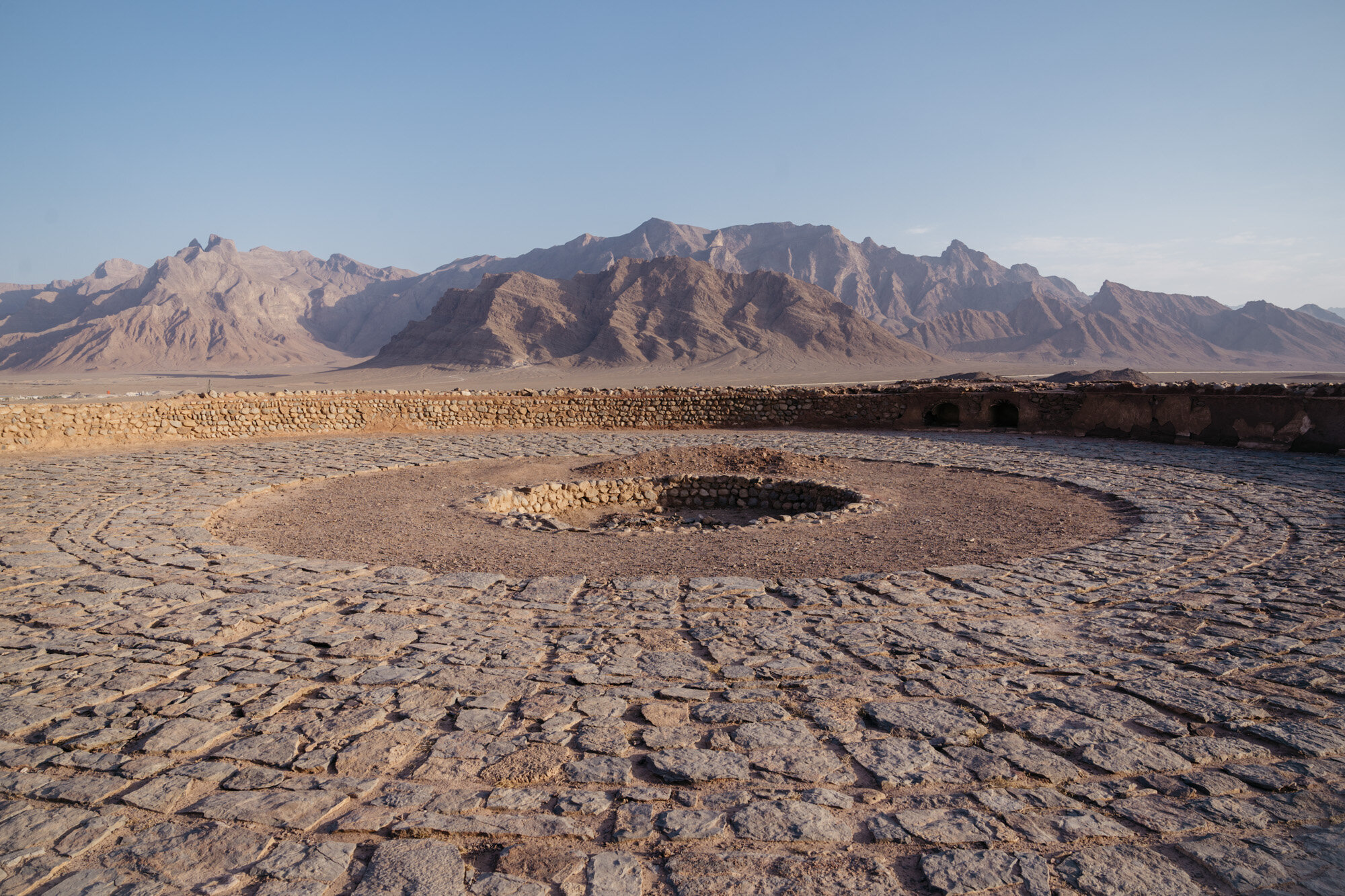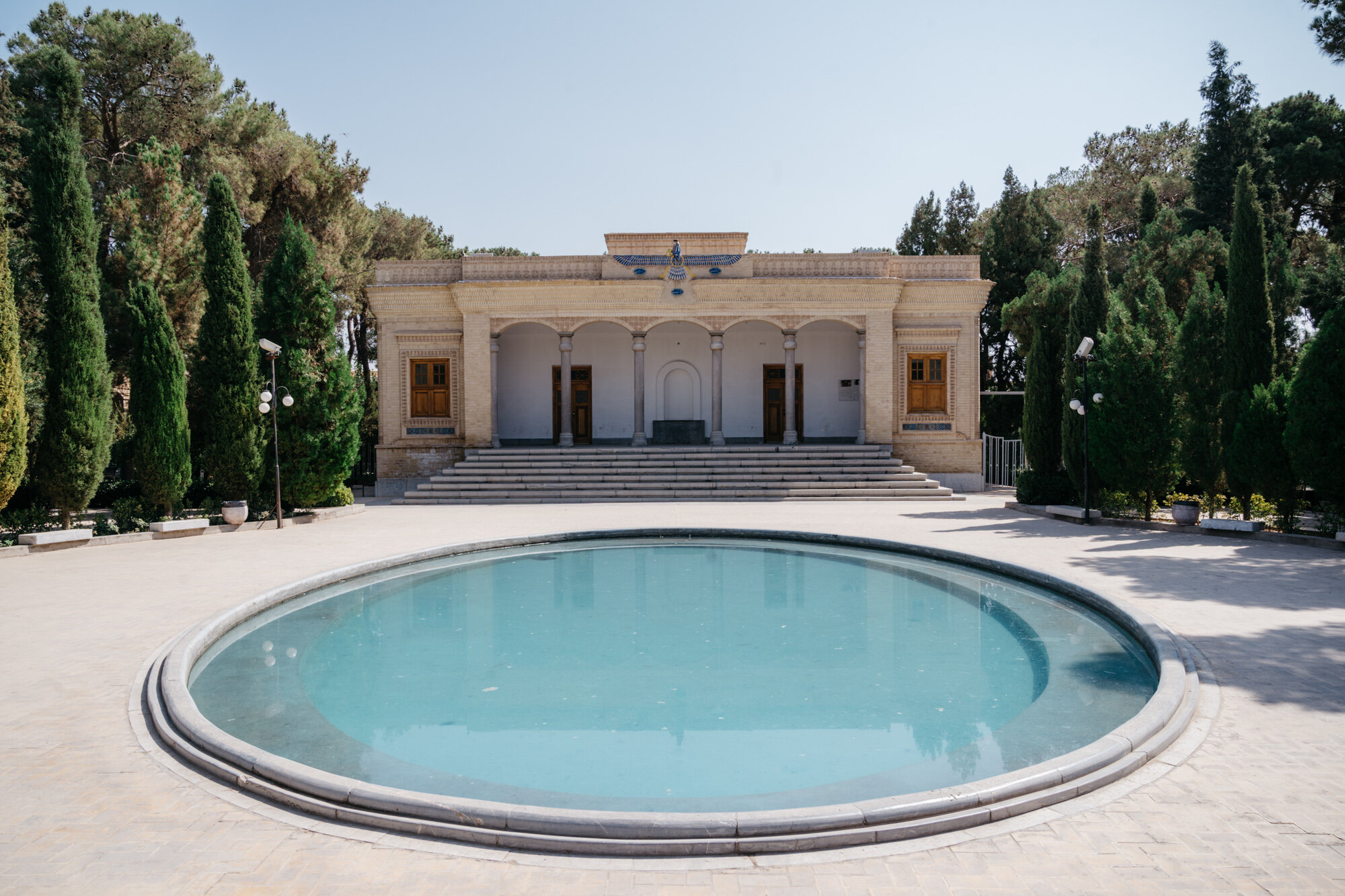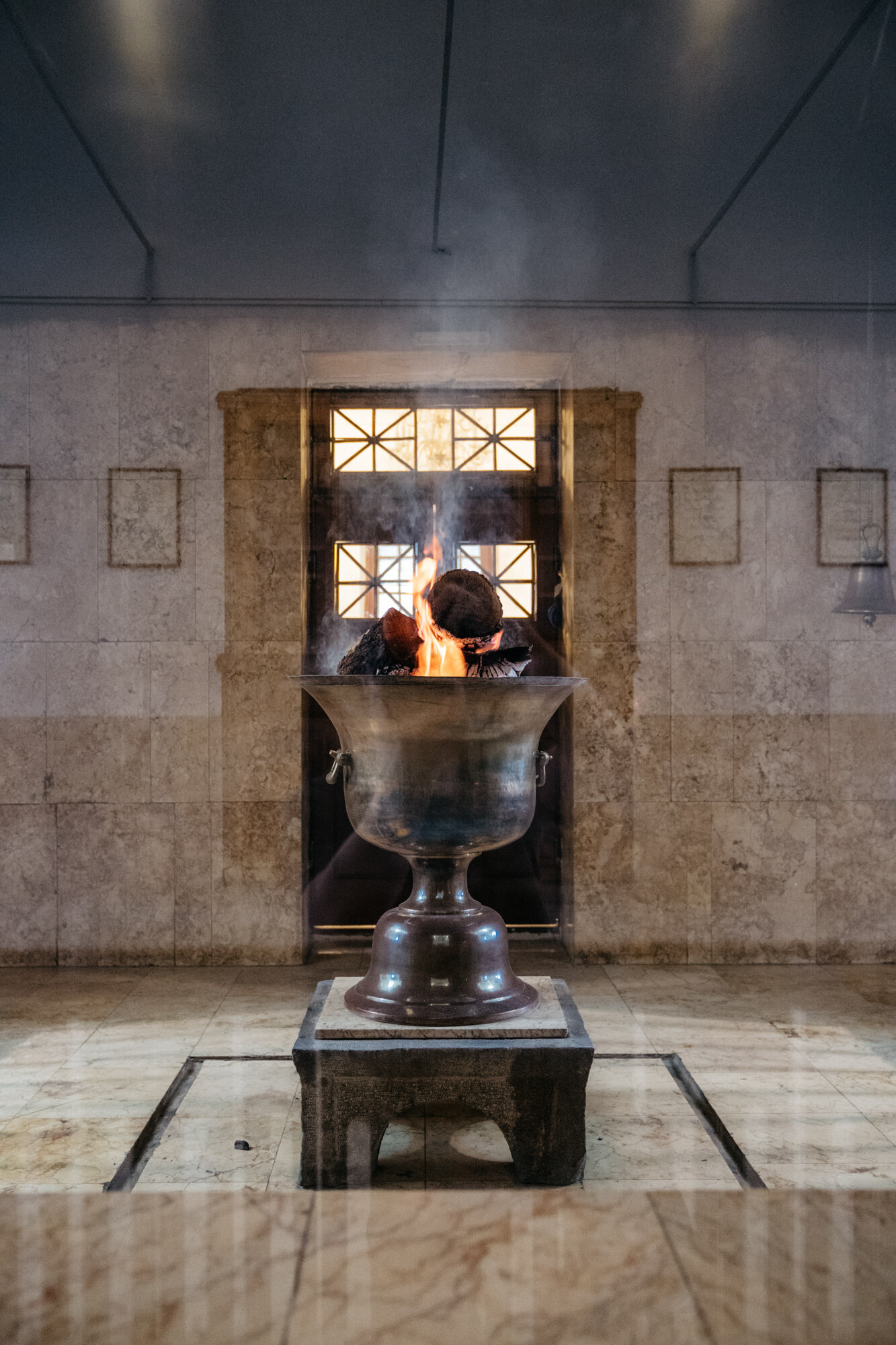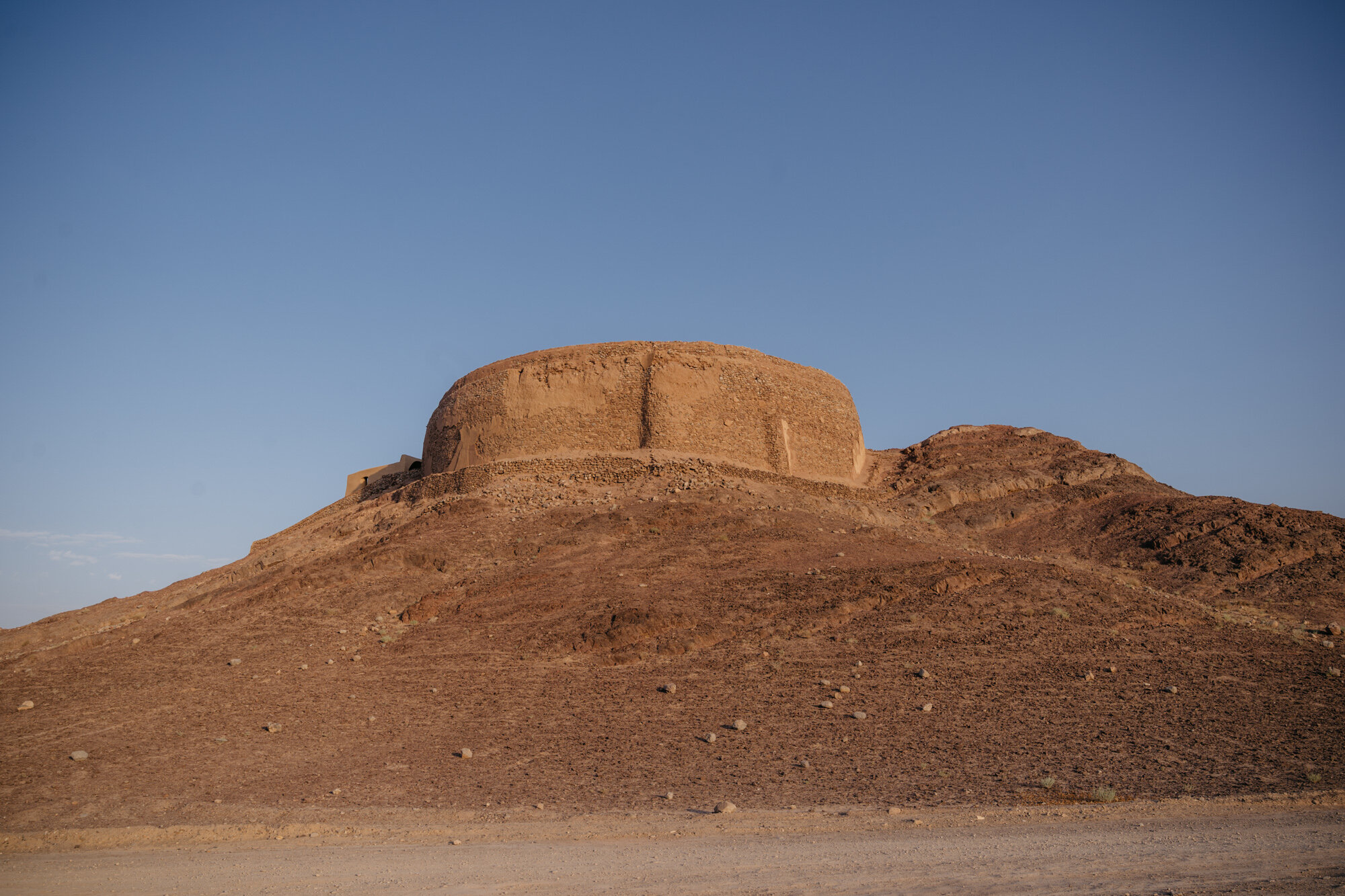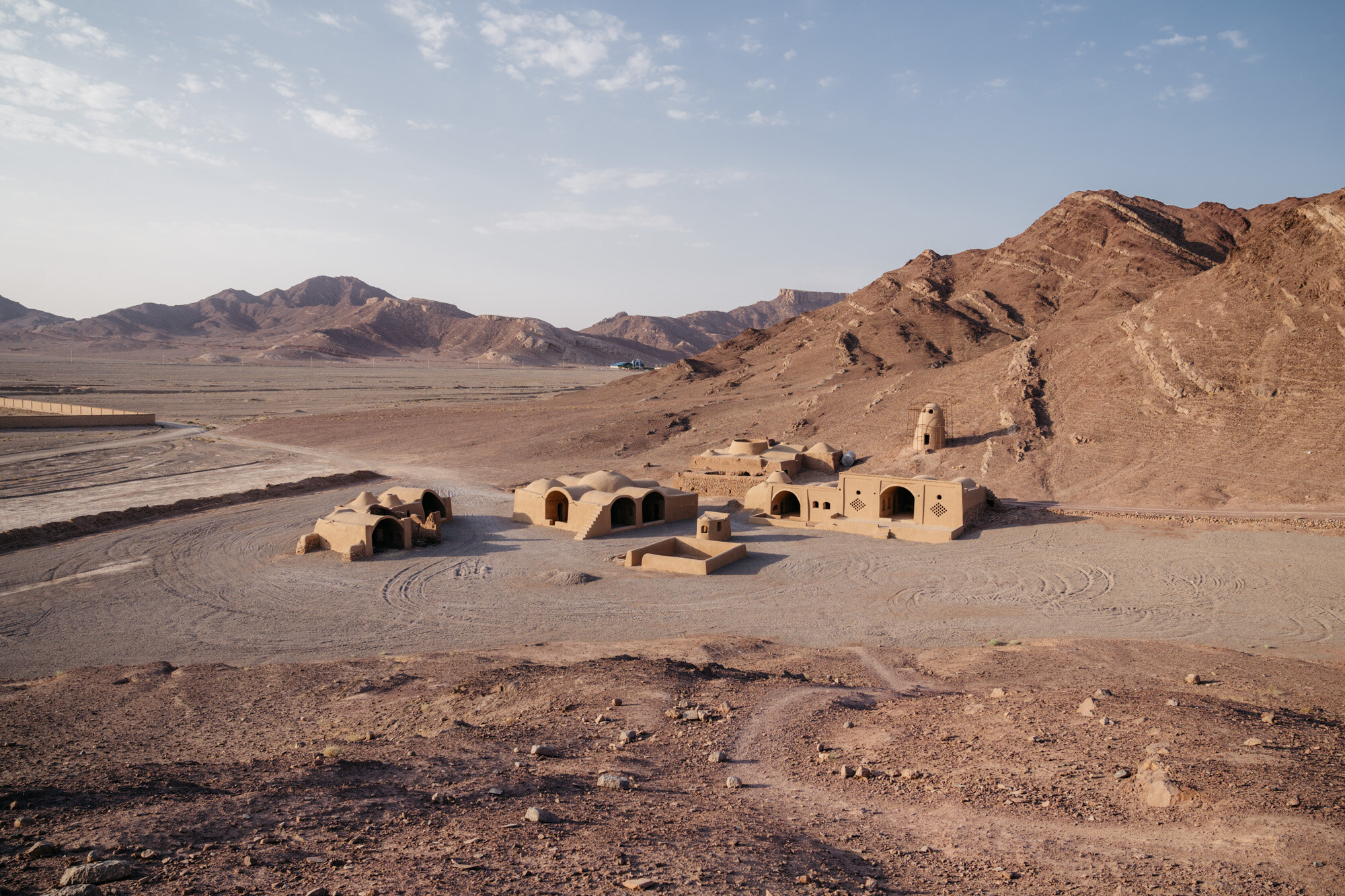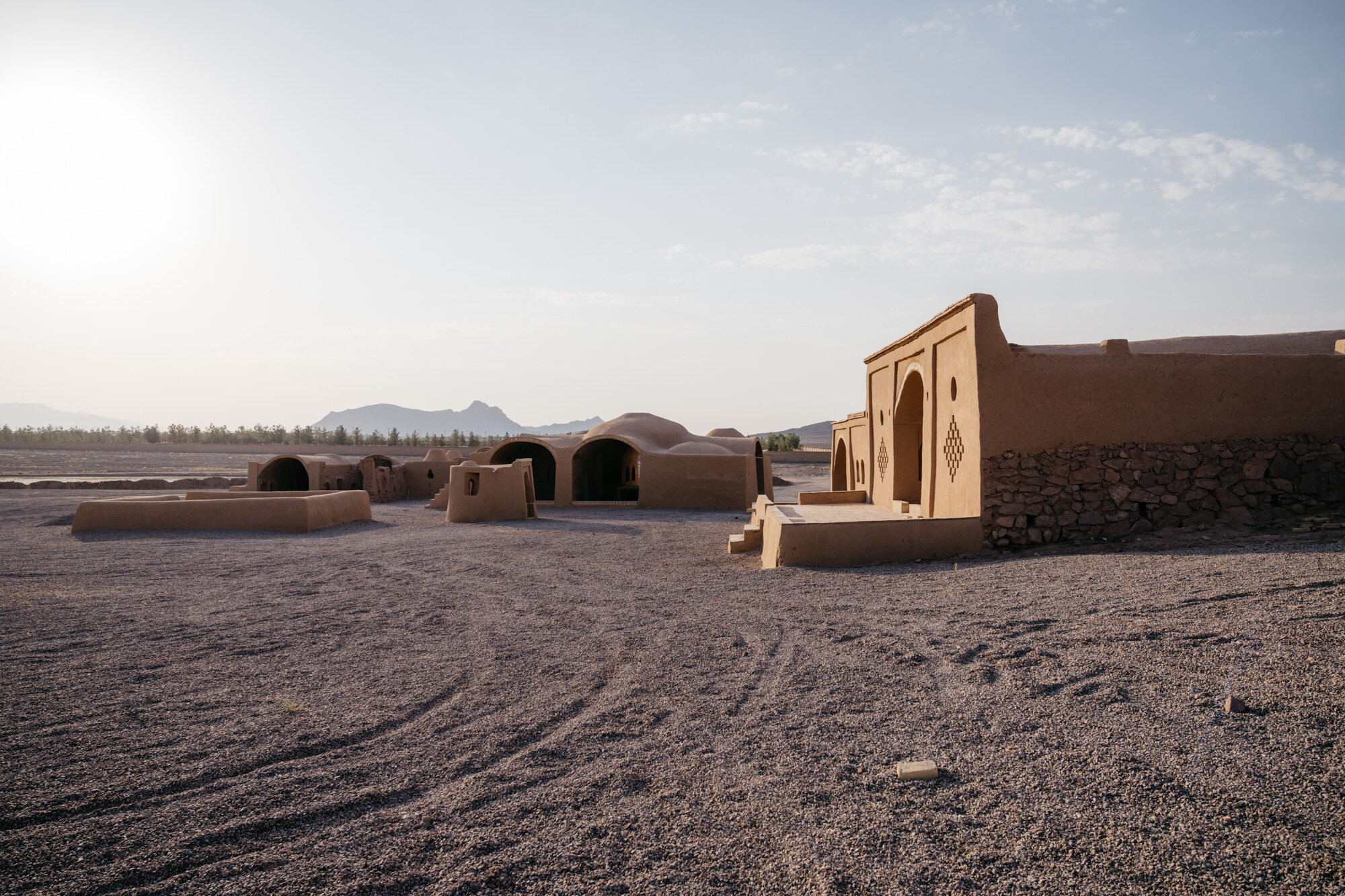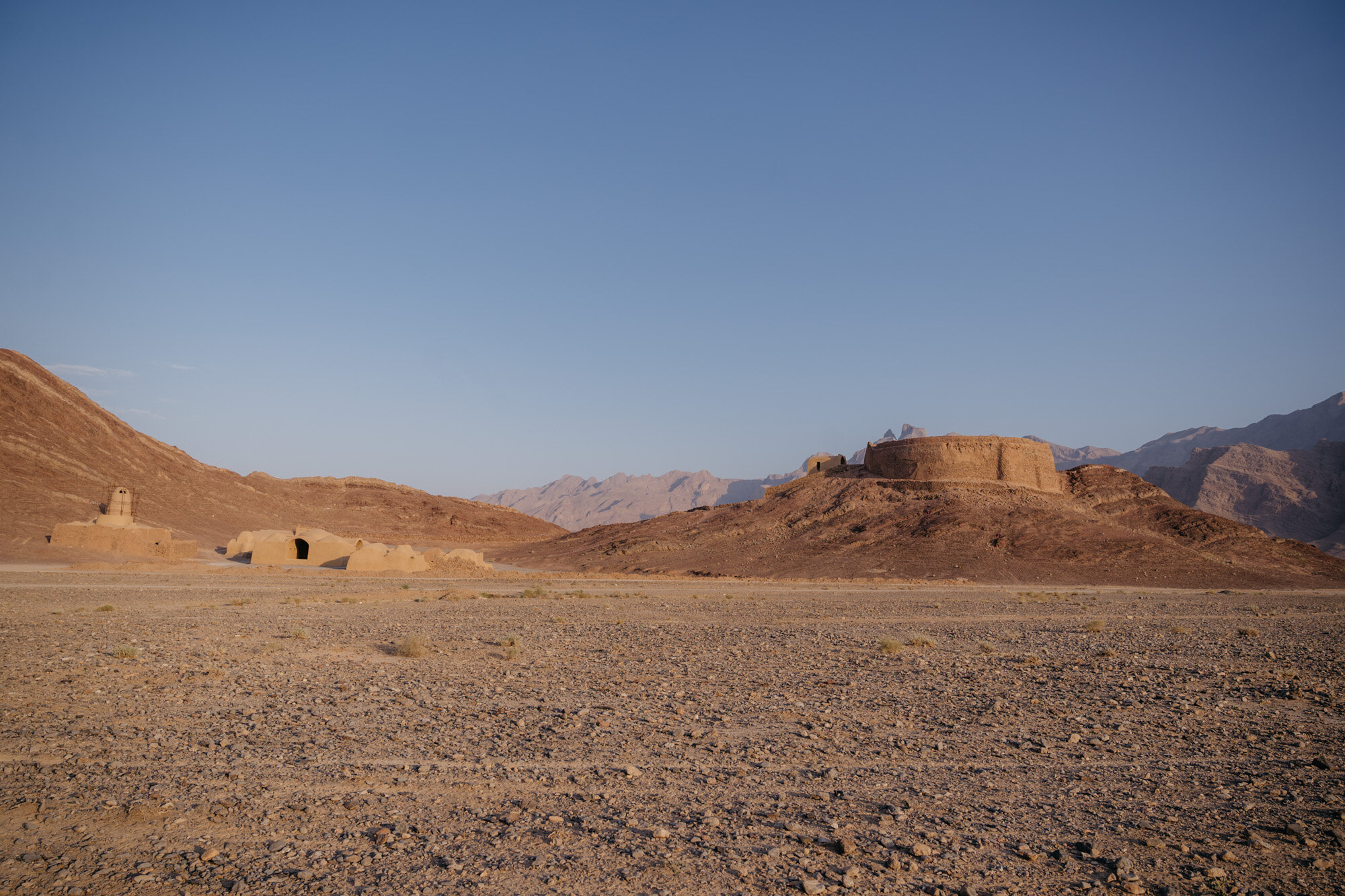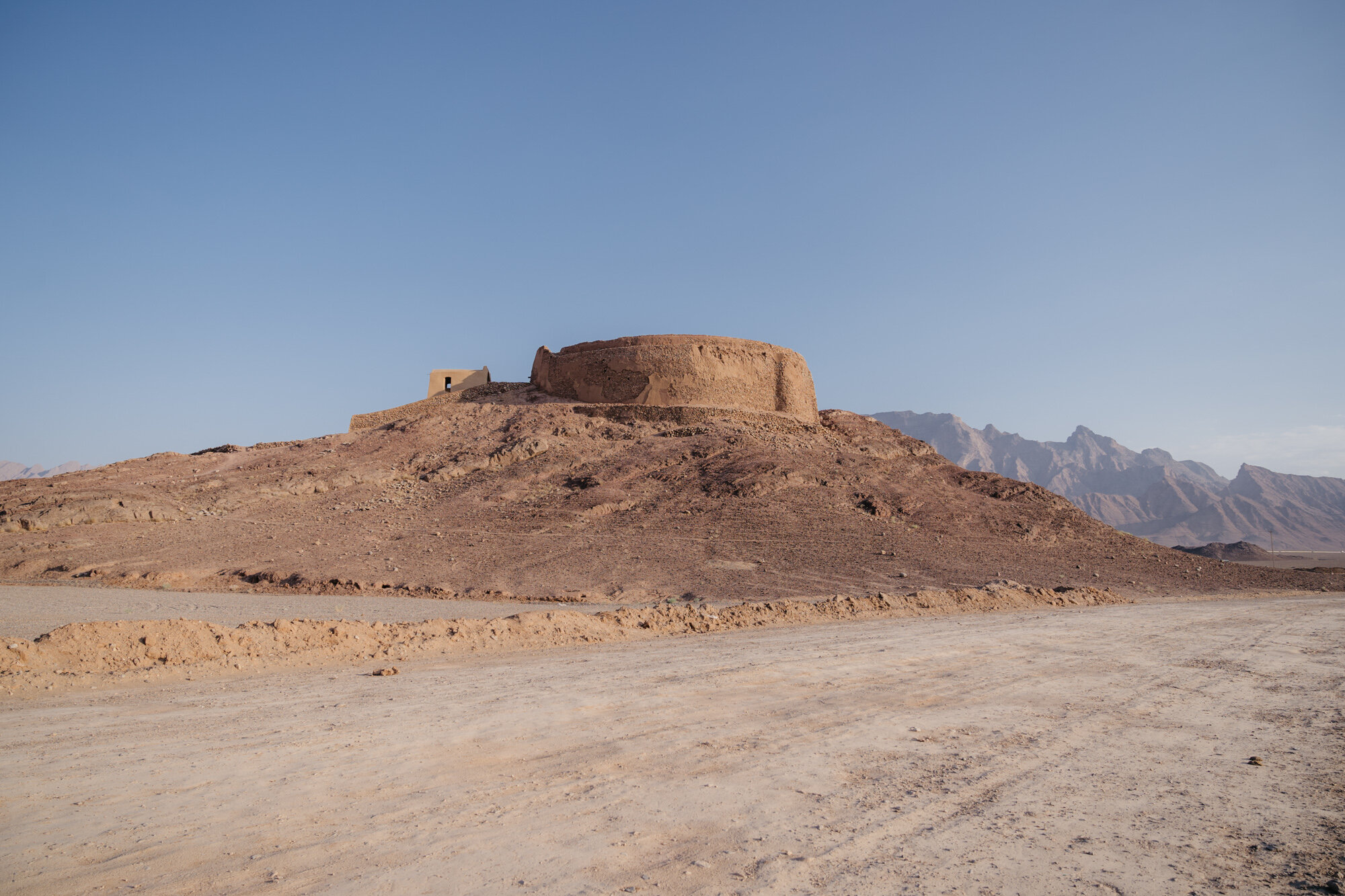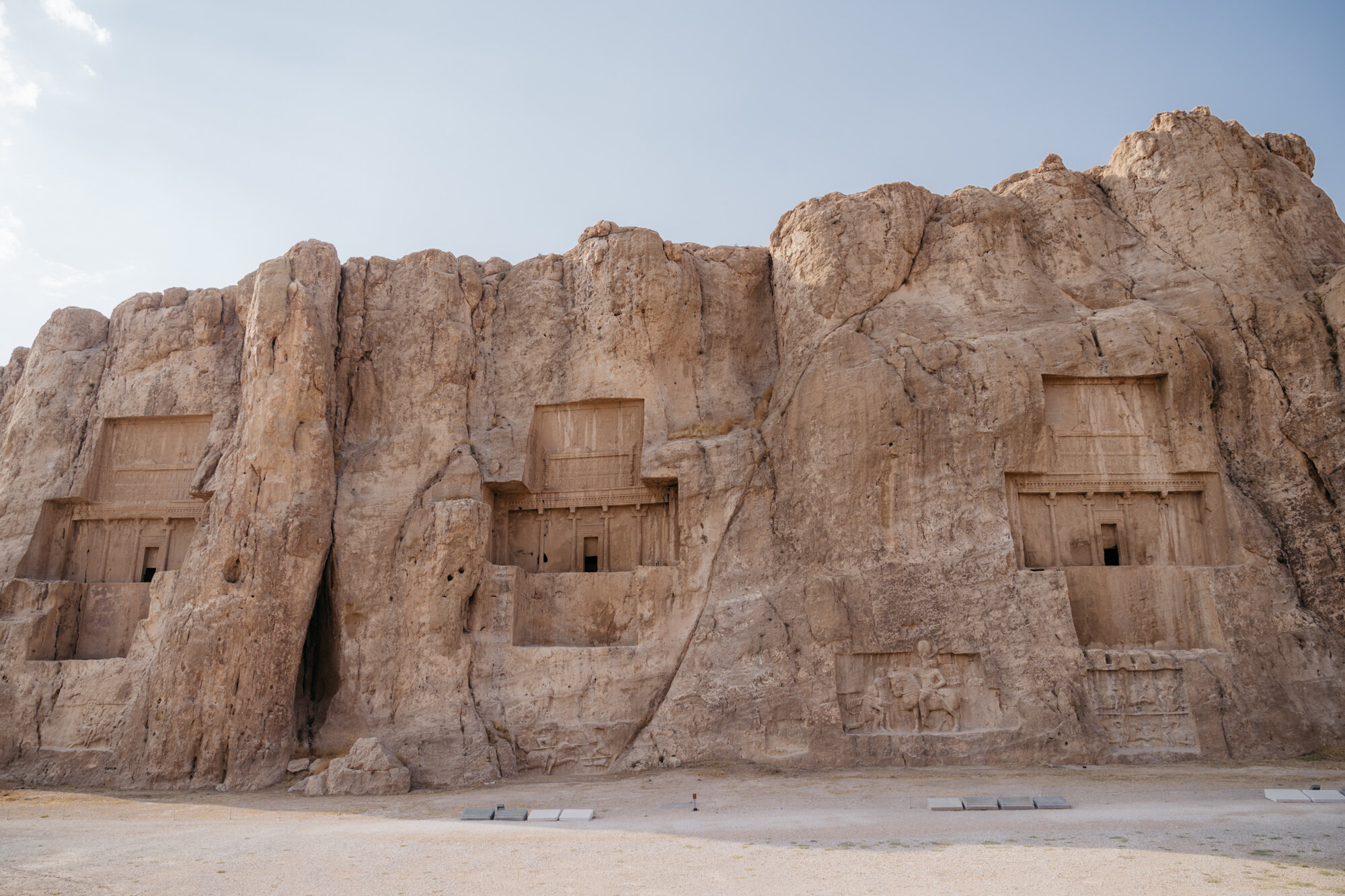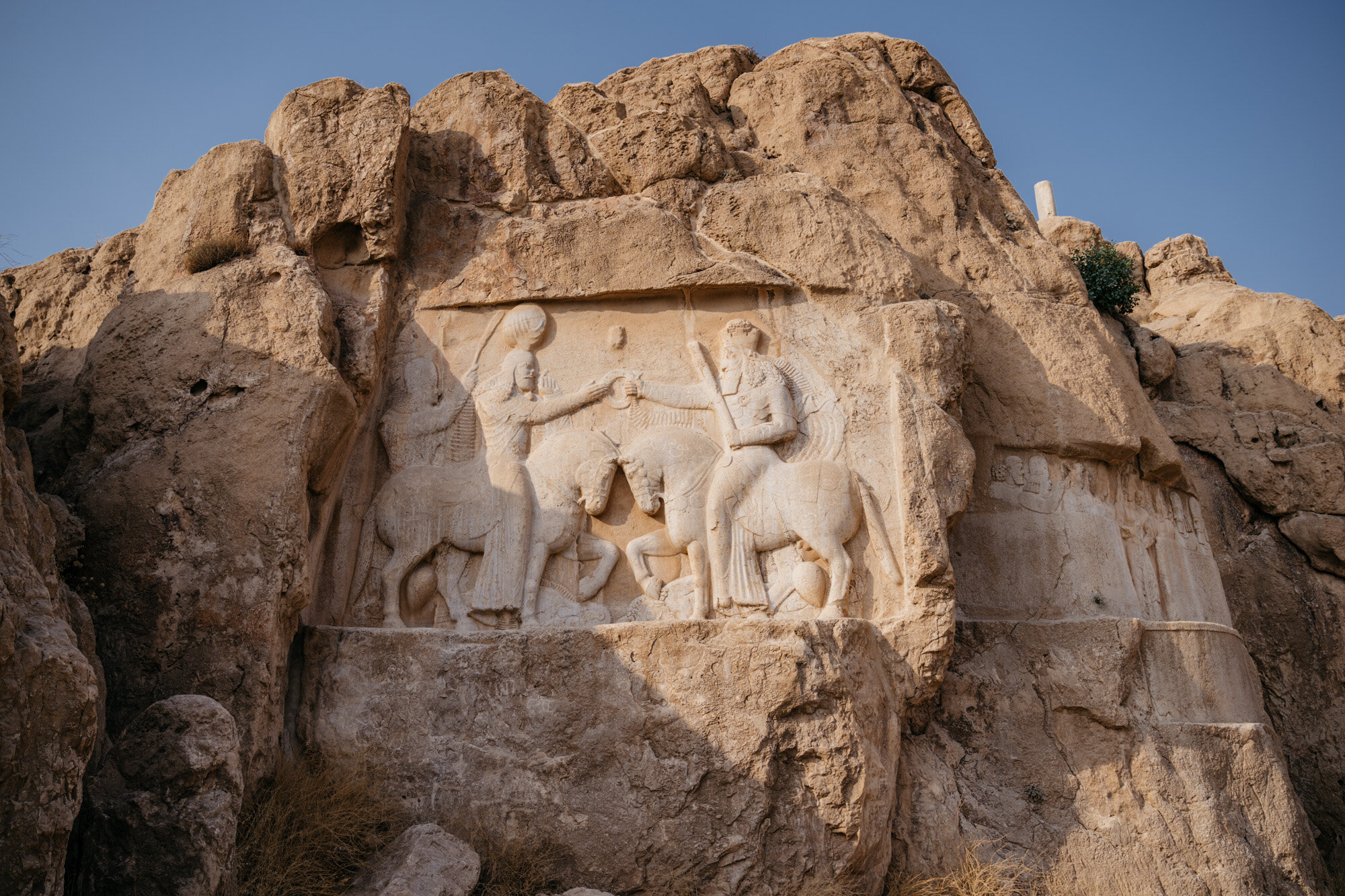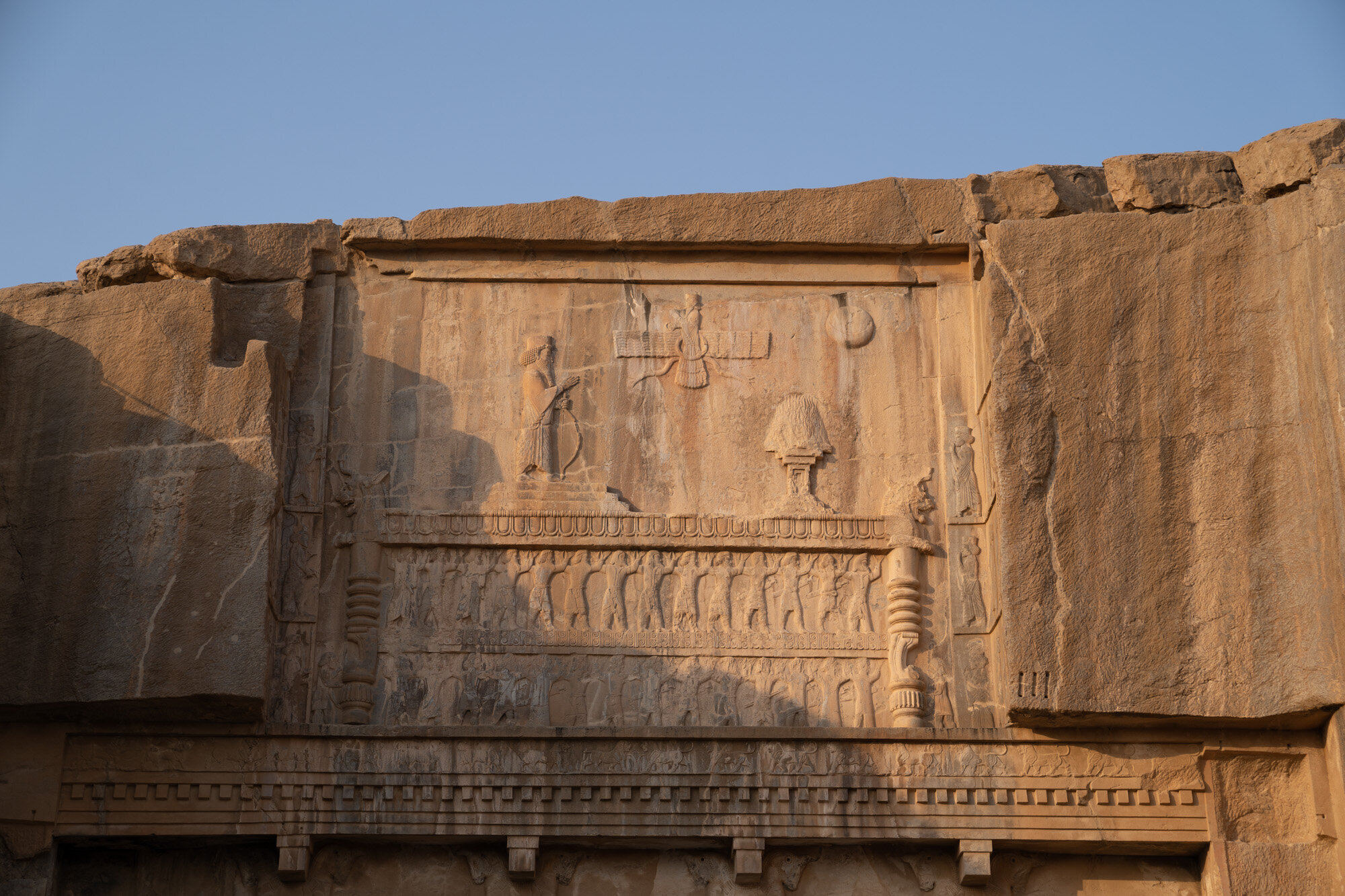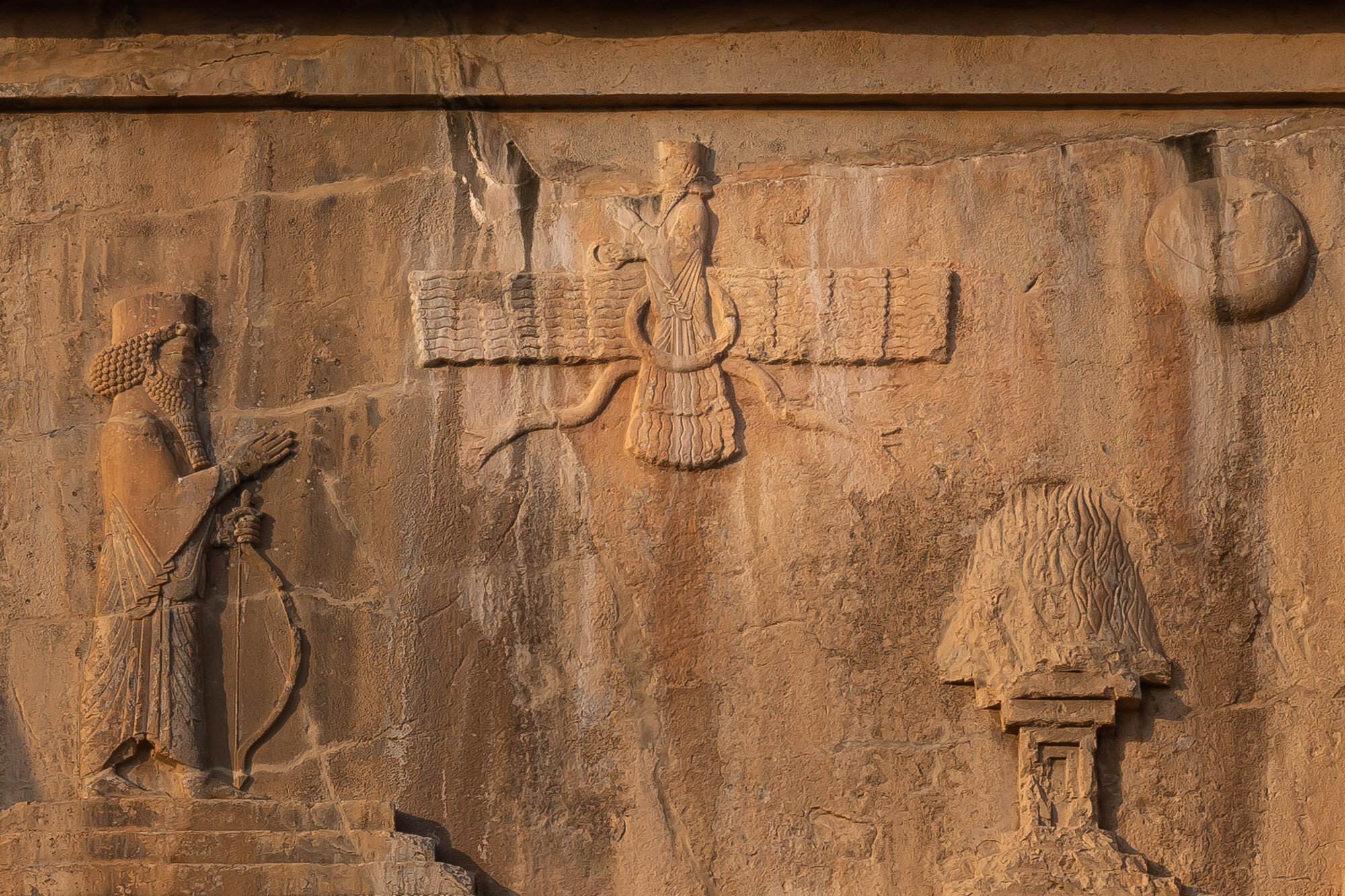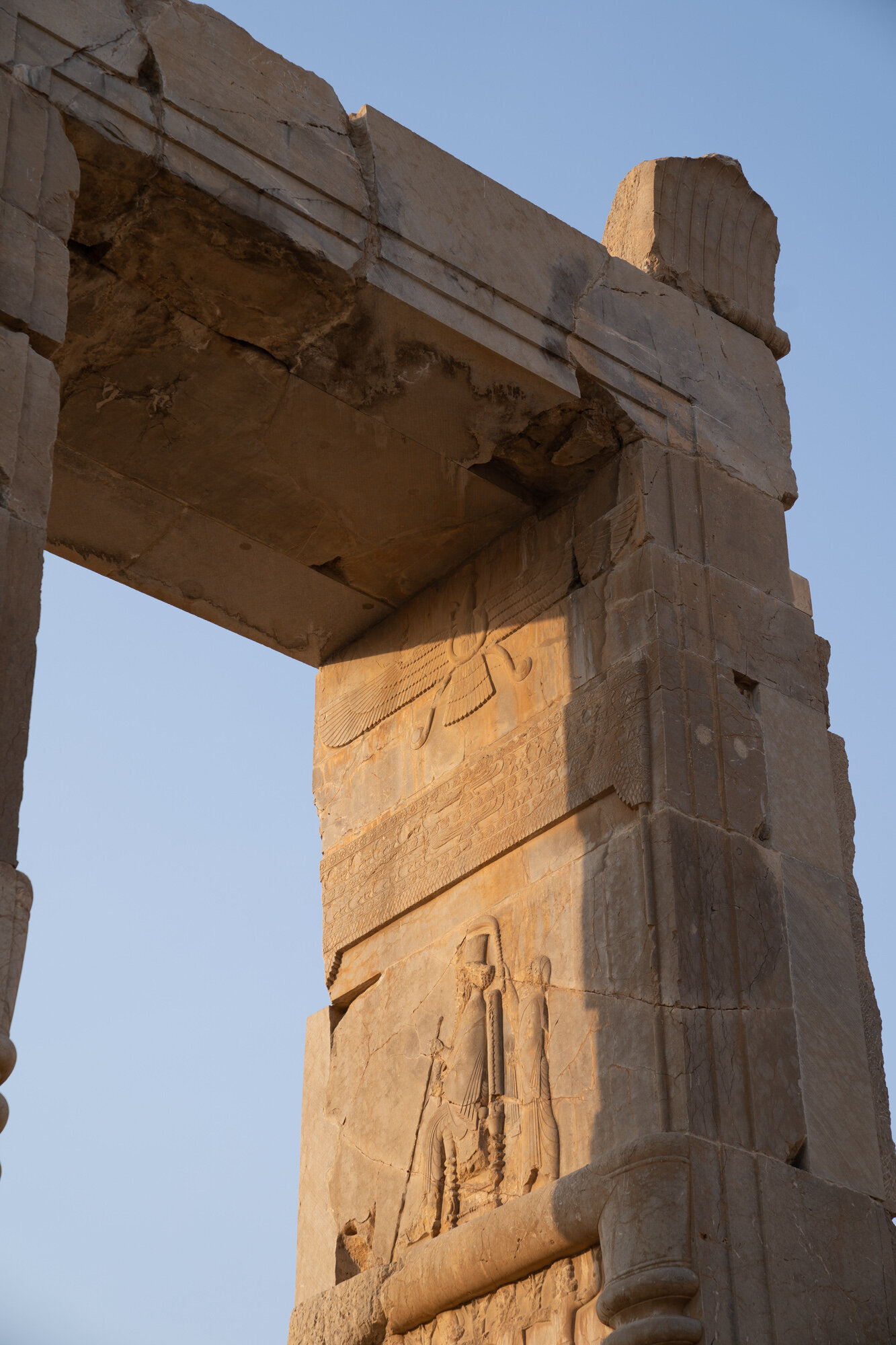Vestiges of Zoroastrianism in Iran
Yazd is Iran’s unofficial capital of Zoroastrianism; one of the world’s oldest continuously practiced religions and Persia’s dominant religion before the arrival of Islam in the 7th century.
Zoroastrianism is a ‘multi-faceted faith centered on a dualistic cosmology of good and evil and an eschatology predicting the ultimate conquest of evil. Historical features of Zoroastrianism, such as messianism, judgment after death, heaven and hell, and free will may have influenced other religious and philosophical systems, including Second Temple Judaism, Gnosticism, Greek philosophy, Christianity, Islam, the Baháʼí Faith, and Buddhism' (Wikipedia).
Zoroastrians worship at fire temples where flames are kept burning for centuries. The flame in Yazd, seen below, has been burning continuously for 1500 years.
Historically, Zoroastrians took their dead out of the cities where their bodies were first prepared by a Zoroastrian priest and then placed at the top of a ‘Tower of Silence’. Here, the flesh of the body was picked off by vultures until only the purified bones remained. The doctrinal rationale for this exposure of the dead body is that it avoids contact with Earth, Water, or Fire, all three of which are considered sacred in the Zoroastrian religion.
Today, this practice is forbidden in Iran. So to prevent polluting the earth, Zoroastrians bury their dead in a coffin of lime plaster so that the body of the dead never touches the soil.
Proselytism is forbidden for Zoroastrians so few remain. Their rituals, however, have influenced other religions and live on in those. Zoroastrians pray five times a day, for example, and in a specific direction; in their case, the sun.
Zoroastrian symbols can be found across Iran, perhaps most notably at the Naqsh-e Rostam necropolis of the Achaemenid (c. 550–330 BC) and Sassanid (c.224–691 AD) dynasties.
Here we see the Zoroastrian god - Ahura Mazda (Wise Lord) - bestowing a ring of light to the Sassanian king Ardashir. A halo appears over his head; a device later appropriated by Christians, Buddhist and Muslims artists to denote the divine.
Amongst the nearby ruins of Persepolis, the capital of the Achaemenid empire, we also see the use of the symbol in the city centre and on the nearby tombs of its kings.
